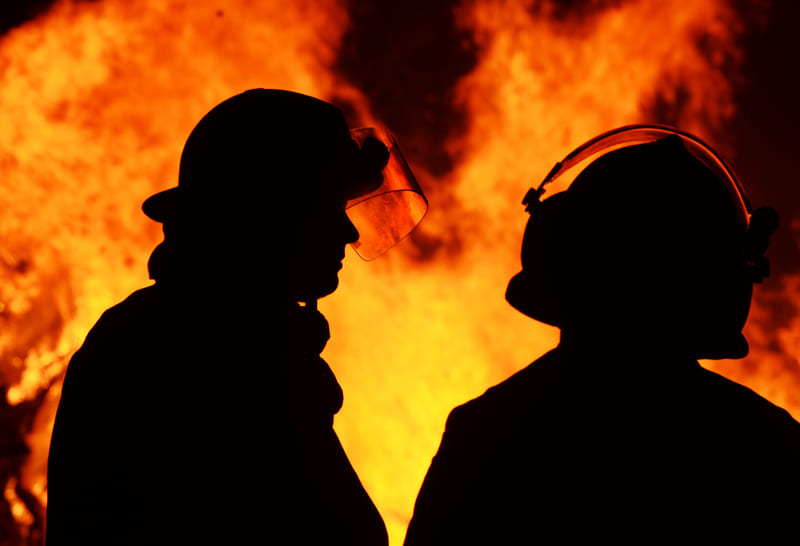A level of first aid training is an essential prerequisite to most of South Africa’s fire fighting departments. These medical skills are understandably highly important in situations where fire fighters are often the first responders to a range of emergencies that often include medical crises. EMCARE recognises and caters for this integral aspect of fire fighting by offering a comprehensive range of first aid courses.
These include the Basic First Aid and First Aid Levels 1-3 courses, each progressively building on the skills and knowledge needed to handle emergency medical situations, as well as a fire fighter 1 course. The day-long Basic First Aid/First Aid Refresher course covers fundamental skills such as CPR, treating burns, wounds, and fractures. These skills are all essential in the immediate response to fire-related injuries. The subsequent levels delve deeper into emergency care, equipping fire fighters with the advanced skills needed to manage more complex medical scenarios they may likely encounter.
Fire fighters, often arriving first at accident scenes, often need to administer emergency medical care before ambulance services arrive and as such, skills like CPR, wound management, and fracture stabilisation can be lifesaving in these critical moments.
The inclusion of medical training in fire fighter preparation significantly enhances their effectiveness. It empowers them to save lives not only by fighting fires but also by providing crucial medical aid in emergencies.
EMCARE’s broad approach to training ensures that fire fighters are well-prepared and versatile. Capable of responding to a variety of emergency situations with confidence and competence.
Role Of Fire Fighters In Community Safety
It is also important to acknowledge that the role of fire fighters extends beyond the immediate response to fires. Fire fighters are pivotal in enhancing community safety and prevention. As safeguards of the communities they serve, fire fighters need to stand as frontline advocates for risk reduction and emergency preparedness. Fire fighters are often involved in community programs and events and are thus expected to impart crucial knowledge about fire safety and emergency preparedness to the public.
This requires a firm knowledge on mitigative strategies. Luckily, EMCARE places significant emphasis on training fire fighters in preventive measures. This training includes strategies to minimise fire risks, such as conducting safety inspections and educating the public about fire hazards. By instilling a proactive approach, fire fighters can play a key role in preventing fires before they start. This engagement helps build a safety-conscious community, where individuals become a sort of first line responder to prevent potential emergencies. Almost a full circle progression to the bucket wielding fire fighters of the 17th century.
Fire Fighter 1: Training
Practical exercises in which real-life fire situations are simulated have also become a core component of the fire fighter training process. These exercises provide invaluable, on-the-ground experience. During practical exercises, trainees confront a range of scenarios, from residential to industrial fires and dealing with hazardous materials. This exposure is obviously vital in fostering the adaptability and quick decision-making skills necessary in the unpredictable and high-risk environment of fire fighting.
Modern fire fighter 1 training programs emphasise physical fitness as well as psychological resilience in their programmes. This holistic approach is essential in preparing fire fighters to meet the intense physical challenges and high-stress situations they will encounter. Activities such as carrying heavy equipment, climbing ladders, and navigating through challenging environments under adverse conditions are regular aspects of the job. Training programs, therefore, emphasise physical conditioning to build strength, agility, and endurance. This includes exercises that mimic the physical demands of fire fighting, such as lifting and carrying heavy gear, simulated search and rescue operations, and drills that replicate the exertion of battling a fire.
Equally important is mental and emotional fortitude. Running headfirst into a blazing building is indeed not for the faint of heart. Fire fighters often face high-pressure situations, and their decisions can have life-or-death consequences. Modern training includes components that help fire fighters develop resilience, stress management skills, and the ability to remain calm and make critical decisions under pressure. Scenario-based training, where fire fighters are placed in simulated emergency situations, plays a key role in developing these mental skills.

Fire Fighter 1 Course
EMCARE incorporates both of these vital elements into our training programmes. The Fire Fighter 1 Course, which includes a focus on health and safety, addresses the physical and mental aspects of fire fighting. Internationally accredited by IFSAC and based on NFPA 1001: Standard for Fire Fighter Professional Qualifications, Fire Fighter 1 & 2 are offered to individuals wishing to pursue a career as a professional fire fighter. Trainees are prepared for the physical demands through exercises that simulate real fire fighting tasks and are taught to manage the psychological impact of emergency response.
The inclusion of these elements in the fire fighter 1 course reflects an understanding that a fire fighter’s effectiveness is as much about mental and physical preparation as it is about technical fire fighting skills. This well-rounded approach is key to developing fire fighters who are not only technically proficient but also physically robust and mentally equipped to handle the challenges of their demanding role.
The fire fighter 1 course is a duration of 9 weeks and the certificate has no expiry date, so you can use your qualification at any time, and whenever you are ready.















